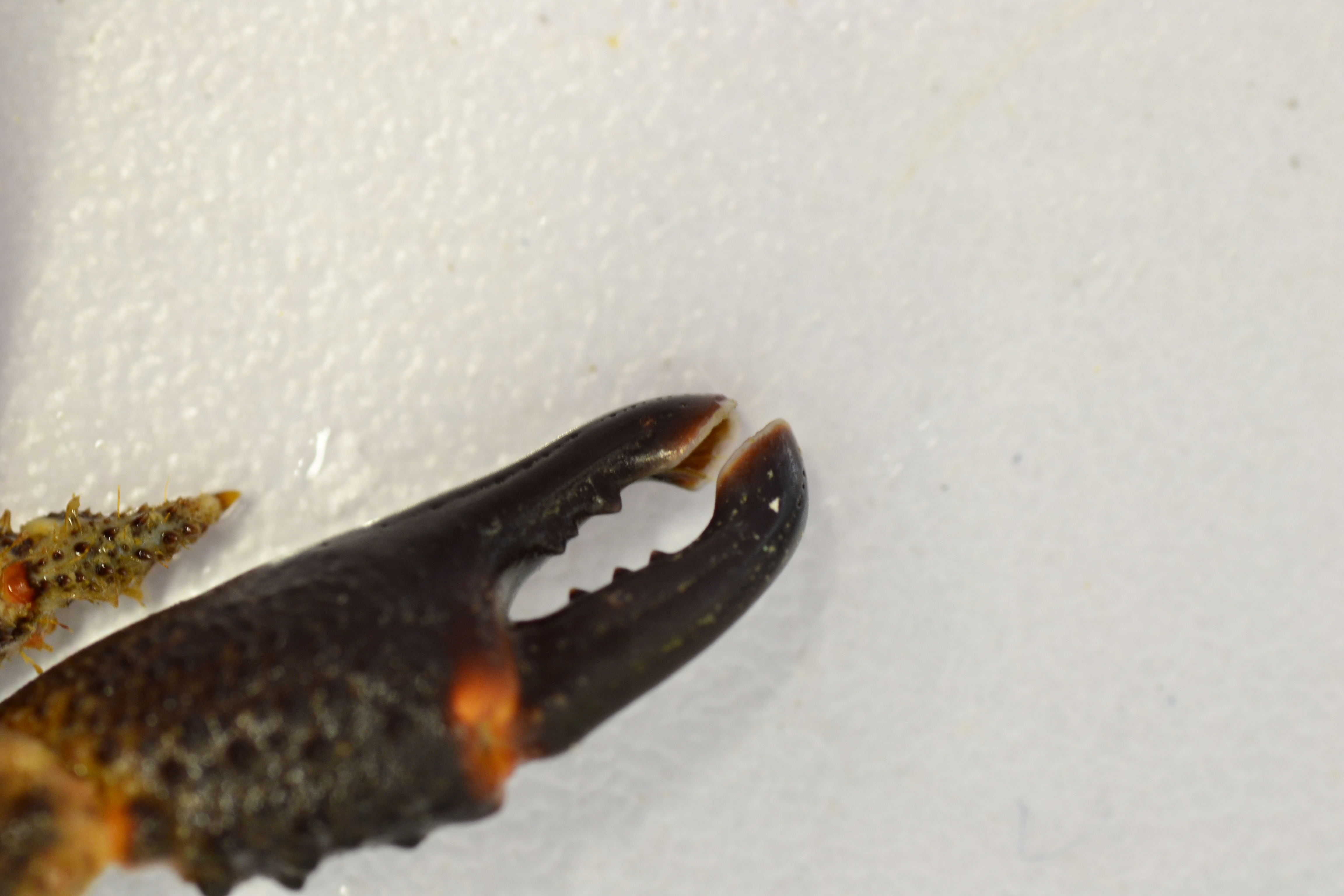Summary
Physical Description
Ecology
Life History & Behaviour
Anatomy & Physiology
Evolution & Systematics
Biogeographic Distribution
Conservation & Threats
References & Links | Physical Description
Size
Cyclodius ungulatus has been known to grow to approximately 30mm across their carapace width (Healy et al. 2011). The largest specimen found in my study was female(Bambi) with a carapace width of 35mm, with the left and right side chelae being 15mm and 20mm in length respectively. Sexual dimorphism is present in Brachyuran crab species meaning that male C. ungulatus could be slightly larger (Abello et al. 1990). Living in symbiosis with coral and in rubble environments plus other physiological traits has likely reduced the need for greater size within the species as their defences likely come from camouflage and protective home ranges rather than aggressiveness and size.
Colouration
Purely coloured for camouflage in their environments of rocky rubble and dark crevices of coral structures. They are always of dark earthy colours usually black, very dark brown or sometimes looking dark grey. The dark shades of the thicker carapace fade to a brilliant orange or brown towards the joints. From a distance the crab can often seem like a lighter shade of grey due to the algal growth and setae on the legs and hind parts of the carapace picking up soot from their environment. Their ventral side is a slightly lighter shade than the thicker carapace on the dorsal sections. They have maroon eyes which contrast well with carapace and orange adding to the camouflage effect.
Distinctive Characteristics
Carapace
- Dark with distinctive swollen parts along the surface
- Often has algae growth and soot resting within the crevices of swollen lumps
- Shorter along carapace length than width
- Four swollen notches along the sides of carapace

Cyclodius ungulatus specialised claw
Limbs
- The four posterior legs taper to a sharp point for expertly gripping corals
- The Chelae show a rare hoof-like shape at the ends of the dactyl and propodus
- Palm of Chelae well covered with tubercles

Pelipods of Cyclodius ungulatus
|
|